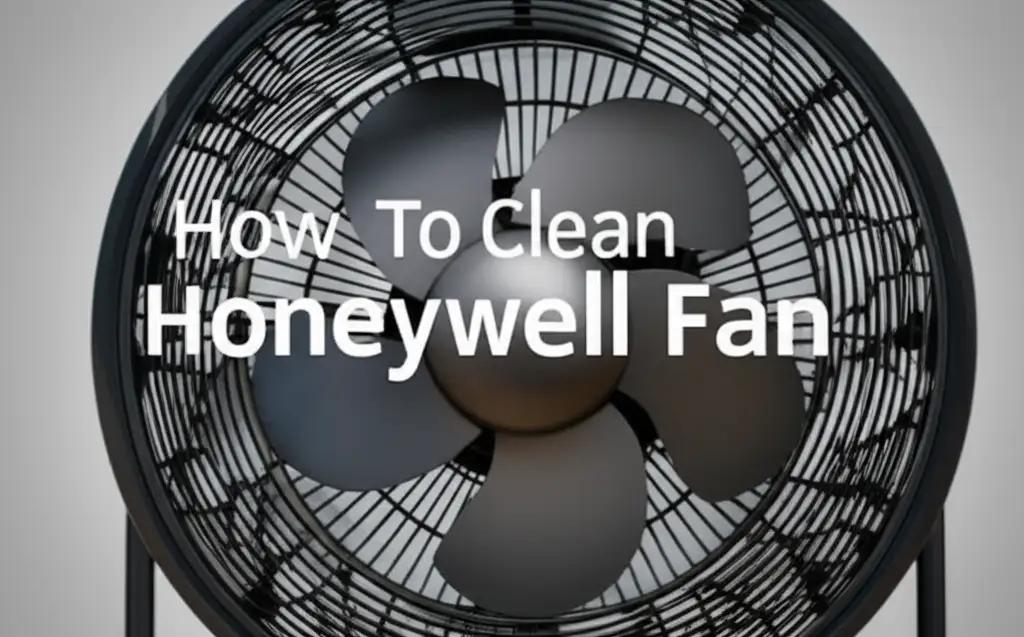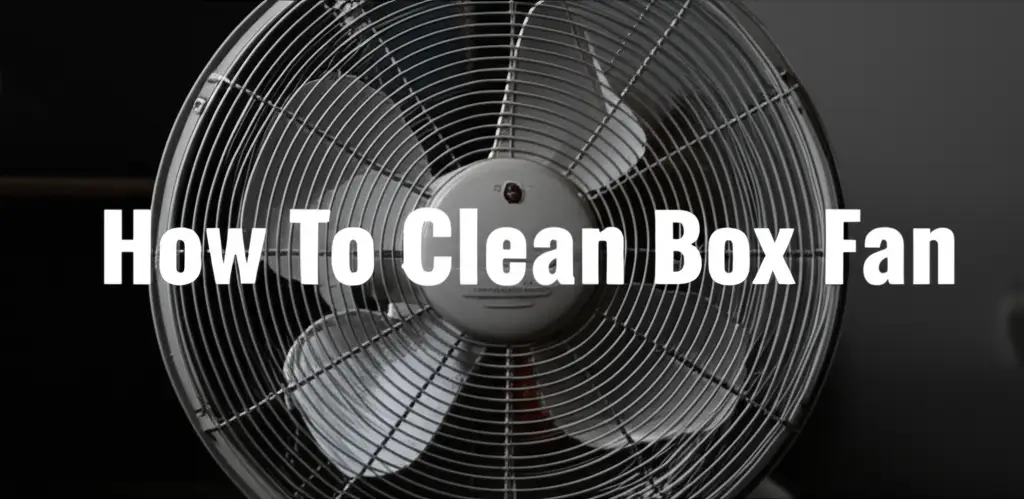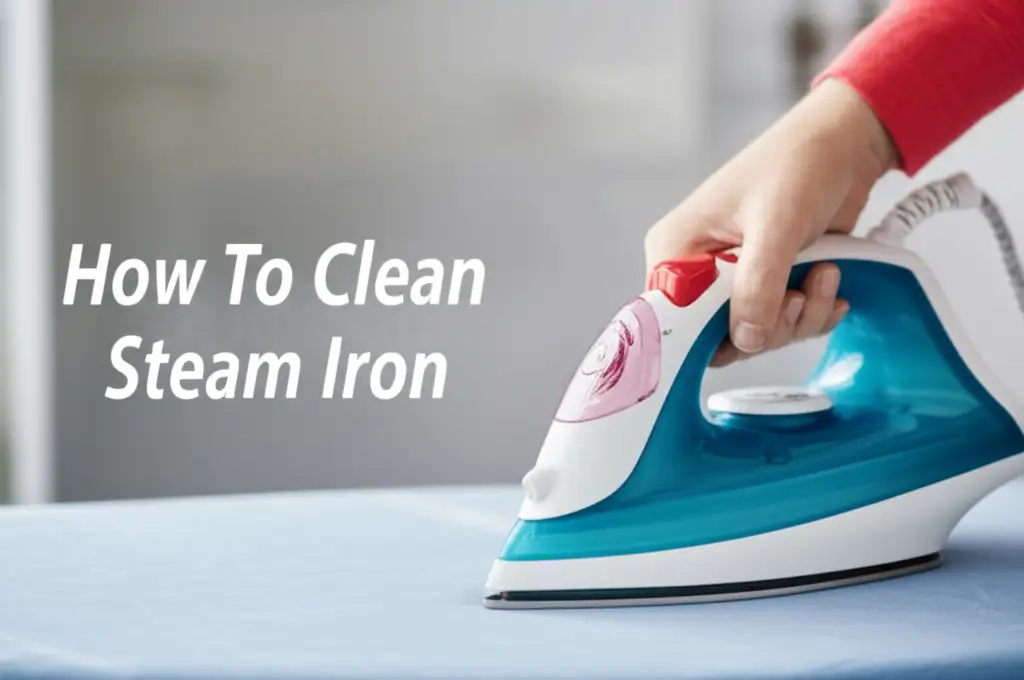· Home Appliance Care · 18 min read
How To Clean Honeywell Fan

Cleaning Your Honeywell Fan: A Complete Guide
Is your Honeywell fan pushing out less air? Do you see a thick layer of dust on its blades? Keeping your fan clean is a simple task that offers big rewards. A dusty fan can circulate allergens and reduce air quality. It also works harder, using more energy. I want my home to feel fresh, and a clean fan helps achieve that. This guide helps you understand exactly how to clean your Honeywell fan. We will cover preparation, tools, cleaning steps for various models, and tips for easy maintenance.
Takeaway
- Regular fan cleaning stops dust from building up.
- Disassembling your fan lets you clean every part.
- Use dry methods for light dust and wet methods for deep grime.
- Always dry fan parts fully before putting them back together.
Concise Answer
To clean your Honeywell fan, first unplug it for safety. Then, carefully take it apart to reach all dusty areas. Use a dry cloth or brush for light dust, or a damp cloth with mild soap for tough grime. Allow all parts to dry completely before reassembling and plugging it back in.
Why Your Honeywell Fan Needs Regular Cleaning
You might not think much about cleaning your fan until you notice a thick layer of dust. This dust is more than just an eyesore. It impacts your home’s air quality and your fan’s performance. My experience tells me that regular cleaning helps keep the air in my home fresh. It also makes my fan last longer.
Dust particles, pet dander, and other tiny bits float in the air. Your fan pulls these into its motor and blades. Over time, these particles stick to the fan’s surfaces. This buildup restricts airflow. Your fan must work harder to move air. This extra work can shorten the fan’s life. It also makes the fan less effective at cooling or circulating air.
Health Benefits of a Clean Fan
A dusty fan can spread allergens and irritants throughout your room. If you have allergies or asthma, this can worsen your symptoms. I find that a clean fan greatly reduces airborne particles. This makes breathing easier for everyone in my home. A fan that blows clean air is good for your health. It helps you maintain a healthier indoor environment. Cleaning your fan helps trap dust before it spreads around.
Improving Fan Efficiency
Dust acts like a blanket on your fan’s blades and motor. This slows down the fan. It also makes the motor get hotter. A hot motor uses more energy to do the same job. When I clean my fan, I notice it pushes air much better. It feels like a new fan. This means my room cools down faster, and my energy bill stays lower. Cleaning dust off your fan is a simple way to boost its efficiency. For general tips on how to clean dust off any fan, you can read how to clean dust off fan.
Essential Tools and Safety Precautions
Before you start cleaning your Honeywell fan, gather the right tools. Having everything ready makes the job quicker and easier. Safety is also very important when working with electrical appliances. I always make sure to follow safety steps first. This prevents accidents and protects your fan.
Gathering Your Cleaning Supplies
You do not need many special tools to clean a fan. Most items you can find around your house. Here is a list of what you will need:
- Screwdriver: Many Honeywell fans need a screwdriver to open their grills. Check your fan model for the right type, usually Phillips head.
- Microfiber cloths: These are great for trapping dust without scratching surfaces. Have a few on hand, one dry and one for damp cleaning.
- Soft brush: A small brush, like an old toothbrush or a paint brush, helps remove dust from tight spots.
- Vacuum cleaner with a brush attachment: This is ideal for sucking up loose dust before wiping.
- Mild soap or dish detergent: Mix a small amount with water for a gentle cleaning solution.
- Water: For damp cloths and rinsing.
- Bowl or bucket: For mixing your cleaning solution.
Prioritizing Electrical Safety
Working with electronics always means thinking about safety. Water and electricity do not mix. Always take safety steps seriously. My first rule is always to unplug the fan. This simple action prevents electric shock.
Here are key safety rules:
- Unplug the Fan: This is the most important step. Make sure the fan is completely disconnected from power before touching it.
- Let it Cool: If your fan has been running, give it time to cool down before handling.
- No Water on Motor: Never spray water directly onto the motor housing or electrical parts. These parts are sensitive to moisture.
- Dry Completely: Ensure all parts are completely dry before reassembling the fan. Reassembling a damp fan can cause short circuits.
- Read Your Manual: Your specific Honeywell fan model might have special cleaning instructions. Always check the user manual first.
Following these safety rules helps you clean your fan without worry.
Step-by-Step Guide: Cleaning Different Honeywell Fan Types
Honeywell makes various types of fans, each with slightly different cleaning needs. Knowing your fan type helps you clean it more effectively. Most portable Honeywell fans, whether tower, pedestal, or box, follow similar general steps for disassembly and cleaning. I will guide you through the process for each common type. The goal is to reach the dusty blades and grilles.
Cleaning Honeywell Tower Fans
Honeywell tower fans are popular for their sleek design and quiet operation. Cleaning them can seem tricky because they are tall and enclosed. However, many Honeywell tower fans, like the QuietSet models, have removable back grills or separate into halves.
Here is how I approach cleaning a Honeywell tower fan:
- Unplug the fan: Always start here.
- Locate the access points: Look for screws on the back or bottom of the fan. Some models have clips or latches instead of screws. Your user manual is helpful here.
- Remove the back cover: Unscrew or unclip the back grill. Some tower fans split vertically down the middle. Gently pull the cover away. Be careful not to force anything.
- Clean the internal parts: Once open, you will see the fan blades (often a long, cylindrical “squirrel cage” type) and the inside of the casing. Use your vacuum cleaner with a brush attachment to suck up loose dust. Then, use a dry microfiber cloth or soft brush to wipe down the blades and inside surfaces. For stubborn dust, a slightly damp cloth can help.
- Clean the exterior: Wipe the outside surfaces with a damp cloth. Make sure all parts are dry before putting them back together.
- Reassemble: Carefully align the back cover and secure it with screws or clips. Ensure all parts fit snugly.
- For more specific guidance on cleaning a tower fan, you can check out this resource on how to clean honeywell quietset tower fan.
Cleaning Honeywell Pedestal and Box Fans
Pedestal fans and box fans are often easier to clean because their front grilles are designed for easier removal. Honeywell makes many models of these. The process involves taking off the front grille to access the blades.
My steps for these types of fans:
- Unplug the fan: Safety first.
- Remove the front grille: Look for clips around the edge of the grille, or a single screw in the center. Twist the center cap counter-clockwise if there is one. Release the clips or remove the screw to take off the front grille.
- Remove the fan blade nut: Most pedestal fans have a nut holding the blade onto the motor shaft. It often has a unique twist direction, sometimes marked “LOOSEN.” Turn it the way it tells you to.
- Pull off the blade: Gently slide the blade off the motor shaft.
- Remove the back grille: There is usually another nut or clips holding the back grille in place. Remove this as well.
- For box fans, the front and back grilles often have screws or tabs holding them. Remove these to separate the two halves of the fan housing. If you have a Honeywell box fan, this guide on how to clean box fan might also be helpful.
Detailed Cleaning of Fan Blades and Grills
Once you have disassembled your fan parts, you can clean them thoroughly. This is where most of the dust collects. I make sure to clean each part carefully.
- For Grills (Front and Back):
- Initial Dust Removal: Use your vacuum cleaner with a brush attachment to remove loose dust.
- Washing: For deeply soiled grills, wash them in a sink or bathtub with warm, soapy water. Use a soft brush or sponge to scrub away dust and grime. Rinse thoroughly.
- Drying: This step is vital. Let the grills air dry completely, or wipe them down with a dry microfiber cloth. Make sure there is no moisture left.
- For Fan Blades:
- Initial Dust Removal: Use a dry microfiber cloth to wipe down the blades. A soft brush can help get into crevices.
- Washing (if removable and safe): If your fan blades are removable and made of plastic or metal, and your fan’s manual says it is safe, you can wash them gently with warm, soapy water. Avoid submerging any part that connects to the motor shaft.
- Drying: Dry the blades completely with a clean, dry cloth. Ensure no water remains on or inside any part.
- For the Motor Housing and Control Panel:
- Wiping: Never use water directly on the motor. Use only a dry microfiber cloth to wipe down the motor housing. For light dust, a vacuum attachment works well.
- Tight Spots: A cotton swab can help clean around the control buttons and smaller crevices. Do not let any liquid enter these areas.
Cleaning each part well ensures your fan works at its best.
Deep Cleaning Stubborn Dust and Grime
Sometimes, dust and grime build up so much that a simple wipe will not do. This is common if you have not cleaned your fan in a long time. Over time, household oils and moisture can mix with dust, making a sticky residue. When I encounter this, I know it is time for a deeper clean. This section covers how to tackle stubborn dirt and ensure your fan components are truly spotless.
Preparing Cleaning Solutions
For tough grime, plain water is not enough. You need a gentle cleaning solution. I always choose mild options to protect the fan’s plastic and metal parts. Strong chemicals can damage the fan’s finish or even its function.
Here is what I use:
- Mild Dish Soap and Water: This is my go-to. Fill a basin or sink with warm water. Add a few drops of mild dish soap. Mix it until you see some suds. This solution effectively breaks down grease and dust without leaving harsh residues.
- Vinegar and Water (Optional): For a natural option, you can mix equal parts white vinegar and water. Vinegar is great for cutting through grime and odors. Make sure to rinse thoroughly afterwards, as vinegar can have a strong smell. However, avoid using vinegar on painted surfaces or certain metals, as it can be acidic. I usually stick to dish soap for general fan cleaning.
Always mix the solution in a separate container. Do not spray or pour it directly onto the fan’s parts. Instead, dampen a cloth with the solution.
Techniques for Washing Fan Parts
Once your cleaning solution is ready, you can start washing the grilles and blades. Remember, this applies only to parts that can be safely removed and washed. Never immerse the motor or electrical parts in water.
Here are the techniques I use:
- Soaking (for Grills): If the grilles are extremely dirty, you can soak them in your mild soap solution for 10-15 minutes. This helps loosen the stubborn grime. After soaking, use a soft brush or sponge to gently scrub away the loosened dirt.
- Wiping and Scrubbing (for Blades and Grills):
- Dip a clean microfiber cloth into your cleaning solution. Squeeze out excess liquid so the cloth is damp, not dripping wet.
- Wipe down each fan blade individually. Pay attention to the leading edges where dust tends to cling.
- For hard-to-reach areas on the grilles, use an old toothbrush or a small utility brush dipped in the solution. Gently scrub the crevices and slats.
- For very sticky grime, apply a bit more pressure or re-dampen your cloth. Work in small sections.
- Rinsing: After cleaning with the soapy solution, it is important to rinse the parts. You can run the grilles and blades under clean, cool water. If rinsing is not practical (e.g., for very large parts), use a fresh, clean cloth dampened with plain water to wipe away all soap residue.
- Critical Drying: This step is paramount. Any moisture left on fan parts can cause issues when you reassemble the fan.
- Shake off excess water from the parts.
- Place them on a clean towel in a well-ventilated area.
- Allow them to air dry completely for several hours, or even overnight.
- You can also use a dry microfiber cloth to thoroughly wipe down every surface. Make sure no water spots remain. I often feel all surfaces to ensure they are dry to the touch before moving on. Do not rush this part.
By following these deep cleaning steps, your Honeywell fan will not only look clean but also perform better and push out fresher air.
Reassembly and Post-Cleaning Checks
After all the cleaning, the next important step is putting your Honeywell fan back together. Reassembly must be done carefully to ensure the fan works safely and correctly. Rushing this part can lead to a wobbly fan, strange noises, or even damage. I always take my time with reassembly. Then, I perform a quick check to ensure everything is in order.
Ensuring All Parts Are Dry
Before you even think about putting parts back, confirm they are completely dry. This is critical for electrical safety and to prevent mold growth inside the fan. Water can cause short circuits or rust on metal components. Even small drops of moisture can cause problems.
Here is how I ensure dryness:
- Visual Inspection: Look closely at every surface. Make sure there are no visible water droplets or damp spots.
- Touch Test: Touch all parts, especially in crevices and hidden areas. They should feel dry to the touch.
- Air Drying Time: Give parts ample time to air dry. For a deep clean, I often let them sit for at least a few hours, or even overnight, in a well-ventilated area. If you live in a humid climate, allow even more time.
- Towel Drying: Use a clean, dry microfiber towel to wipe down every surface thoroughly before reassembly. This helps remove any lingering moisture.
Only when I am fully confident that all parts are dry do I proceed.
Testing Your Cleaned Fan
Once your fan is fully reassembled, you are ready to test it. This step checks if you put everything back correctly and if the fan runs smoothly. I always perform this test carefully.
Follow these steps for testing:
- Placement: Place the fan on a stable, flat surface away from anything that could obstruct its operation.
- Plug In: Plug the fan into a grounded electrical outlet.
- Start Low: Turn the fan on at its lowest setting first.
- Listen and Watch:
- Listen for unusual noises: Does it hum, rattle, or squeak? A clean fan should run smoothly and quietly.
- Watch for wobbling: Does the fan head or base wobble excessively? This might mean a part is not tightened enough or misaligned.
- Check airflow: Does it push air evenly and strongly? You should feel a clear difference after cleaning.
- Increase Speed: If the low setting runs well, gradually increase the speed to the highest setting. Observe its performance at each level.
- Oscillation (if applicable): If your fan has an oscillation feature, turn it on. Make sure it moves smoothly without sticking or jerking.
- Power Off: Turn the fan off and unplug it when you are done testing.
If you notice any issues during testing, unplug the fan immediately. Then, recheck the assembly. Make sure all screws are tight and all parts are correctly aligned. This careful reassembly and testing ensures your Honeywell fan is ready to provide clean, efficient airflow for a long time.
Maintaining Your Honeywell Fan for Long-Term Performance
Cleaning your Honeywell fan is a great step. But regular maintenance keeps it running at its best year after year. A consistent cleaning routine prevents heavy dust buildup. This saves you time and effort in the long run. I find that a little regular care goes a long way. It ensures my fan always gives me fresh air and good performance.
Recommended Cleaning Frequency
The ideal cleaning frequency depends on several factors. These include how often you use your fan, how dusty your environment is, and if you have pets. Here are my general guidelines:
- Light Use/Clean Environment: If you use your fan only occasionally or live in a very clean home, a thorough deep clean once every six months to a year might be enough.
- Regular Use/Average Environment: For fans used daily or in homes with average dust levels, I recommend a deep clean every 3-4 months.
- Heavy Use/Dusty Environment/Pets/Allergies: If your fan runs almost constantly, you have pets that shed, or family members with allergies, a deep clean every 1-2 months is best.
- Quick Dusting: Regardless of deep cleaning frequency, a quick dusting of the outer grille and casing weekly or bi-weekly is always a good idea. This prevents dust from settling deeply inside.
Adjust these times based on what you see. If you notice dust building up quickly, clean it more often.
Quick Tips for Daily Fan Care
You do not need to disassemble your fan every week. Simple, quick cleanings help maintain its performance between deep cleans. These small actions make a big difference. They keep your fan working well and looking clean.
Here are my quick care tips:
- Exterior Wipe Down: Use a dry microfiber cloth to wipe down the outer surfaces of the fan. Pay attention to the front and back grilles where dust collects. This takes only a minute or two.
- Vacuum the Grilles: Use your vacuum cleaner’s brush attachment to gently suck dust from the front and back grilles. You do not need to open the fan for this. This helps remove surface dust before it can get trapped inside.
- Clean the Base: Dust often settles on the fan’s base. Give it a quick wipe to keep it looking clean.
- Proper Storage: If you store your fan during off-seasons, cover it with a cloth or a fan cover. This stops dust from getting inside while it is not in use. Store it in a dry, clean place.
By adopting these maintenance habits, you can extend the life of your Honeywell fan. You will also enjoy cleaner, fresher air in your home more consistently. Regular cleaning is a small effort for a large return.
FAQ Section
How often should I clean my Honeywell fan?
The frequency depends on use. For daily use, a deep clean every 3-4 months is good. If you use it less, every 6-12 months may be enough. Weekly or bi-weekly quick dusting of the exterior is also recommended to prevent heavy buildup.
Can I put Honeywell fan parts in the dishwasher?
No, you should not put fan parts in a dishwasher. The high heat can warp plastic parts. Dishwasher detergents might also be too harsh. It is best to wash removable grilles and blades by hand with mild soap and water.
What if my Honeywell fan still smells after cleaning?
If your fan still smells, it might be due to trapped moisture or mold. Ensure all parts are completely dry before reassembly. For persistent odors, try wiping non-electrical parts with a cloth dampened with a mild vinegar-water solution, then rinse and dry thoroughly.
Is it safe to use water on my fan’s motor?
No, it is not safe to use water directly on your fan’s motor or any electrical components. Water can cause short circuits, damage, or create a shock hazard. Always use only a dry cloth or a vacuum cleaner with an attachment for cleaning the motor housing.
How do I clean a sealed Honeywell fan?
Some Honeywell fans are designed not to be opened easily, or they are “sealed.” For these, you cannot disassemble them. Use a vacuum cleaner with a brush attachment to remove dust from the grilles. You can also use compressed air to blow dust out. Wipe the exterior with a damp cloth.
What tools are essential for cleaning a Honeywell fan?
Essential tools include a screwdriver (usually Phillips head), microfiber cloths, a soft brush (like an old toothbrush), a vacuum cleaner with a brush attachment, and mild dish soap. These tools help you safely and effectively clean all fan parts.
Conclusion
Cleaning your Honeywell fan is a small task with significant benefits for your home. You improve air quality, reduce allergens, and boost the fan’s efficiency. I have found that a clean fan always performs better. It feels good to know my fan is circulating fresh, clean air. By following the steps in this guide, you can confidently disassemble, clean, and reassemble your fan.
Remember to prioritize safety by unplugging the fan first. Take your time during the cleaning and reassembly process. Ensure all parts are completely dry before plugging the fan back in. Regular maintenance, even quick exterior wipes, keeps heavy dust away. Do not wait for dust to slow your fan down. Take action today to clean your Honeywell fan. Enjoy a cleaner, cooler home environment.
- Honeywell fan
- fan cleaning
- dust removal
- appliance care
- home cleaning
- fan maintenance
- air quality




